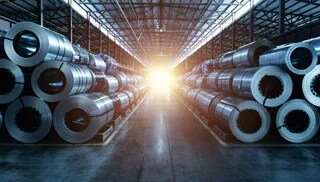Decline in Steel Demand Expected in Russia Amid Economic Shifts


Russia’s steel industry is anticipating a significant downturn in demand in the coming months, according to recent reports from industry analysts and economic experts. This projected decline is attributed to a combination of domestic economic challenges, shifting global trade dynamics, and reduced investment in key sectors that traditionally drive steel consumption.
The Russian steel market, historically robust due to its extensive infrastructure projects and strong construction sector, is now facing headwinds that could dampen growth. One of the primary factors contributing to the expected decrease in steel demand is the slowdown in the construction industry. Recent data from the Russian Federal State Statistics Service (Rosstat) indicates a marked reduction in new construction projects, both residential and commercial, leading to lower steel consumption. This slowdown is partly due to tightened financial conditions and increased costs of raw materials, which have made new projects less financially viable.
Economic sanctions imposed by Western countries have also played a crucial role in affecting Russia’s steel demand. These sanctions have restricted access to international financing and advanced technologies, hindering the ability of Russian steel producers to expand and modernize their operations. Additionally, the geopolitical tensions have led to a decline in foreign investments in the steel sector, further exacerbating the demand slump.
Global market trends are another significant factor influencing the decline in steel demand in Russia. The global shift towards sustainable and green technologies has reduced the reliance on traditional steel in favor of alternative materials that are perceived as more environmentally friendly. Countries around the world are investing in lightweight and composite materials, which offer similar benefits to steel but with a lower environmental footprint. This global trend is gradually impacting Russia’s steel exports, as international buyers seek more sustainable options.
Moreover, the recent fluctuations in the Russian ruble have made imported steel more expensive, leading to a preference for locally produced steel. However, the domestic production has not kept pace with the reduced demand, resulting in excess inventory and downward pressure on prices. This price volatility is discouraging both consumers and producers from investing in the steel market, further contributing to the anticipated decline.
Industry experts warn that the decline in steel demand could have broader implications for Russia’s economy. The steel industry is a significant contributor to the country’s GDP and employment, and a sustained downturn could lead to job losses and reduced economic activity in related sectors. Additionally, lower steel production may impact Russia’s ability to meet its infrastructure and defense needs, potentially slowing down national development projects.
In response to the declining demand, Russian steel producers are exploring diversification strategies to mitigate the impact. Some companies are shifting their focus towards more specialized and high-value steel products, catering to niche markets that remain resilient despite the overall downturn. Others are investing in technological advancements to enhance the efficiency and sustainability of their production processes, aiming to regain competitiveness in both domestic and international markets.
The Russian government is also taking measures to support the steel industry during this challenging period. Initiatives include providing financial incentives for modernization projects, easing regulatory burdens, and fostering partnerships with foreign investors to inject much-needed capital into the sector. These efforts are aimed at stabilizing the steel market and ensuring its long-term sustainability amidst the current economic challenges.
As Russia navigates through these economic shifts, the steel industry’s ability to adapt and innovate will be crucial in determining its future trajectory. The expected decline in steel demand underscores the need for strategic planning and investment to overcome the current obstacles and secure a stable growth path for the industry.
Recent Posts
Macbor Montana XR5 510 Review: A Reliable Off-Road Motorcycle
The Macbor Montana XR5 510 has garnered attention in the off-road motorcycle market, offering a…
Preparing for the European Cross Country Championship: Athletes Gear Up for the Challenge
The excitement is building as athletes across Europe prepare for the upcoming European Cross Country…
Sam Sunderland: Preparing for the Dakar Rally is More Enjoyable Than Racing It
Sam Sunderland, the British rider, shared his thoughts on the preparation process for the Dakar…
© TVS RTS X Supermoto Launch
TVS Motor Company has officially unveiled its latest addition to the supermoto category, the TVS…
2025 KTM 250 XC-W Review: The Ultimate Off-Road Companion
The 2025 KTM 250 XC-W is a top contender in the off-road motorcycle market. Known…
CFMoto CF-X Konsepti İncelemesi: Yeni Nesil Motorsporlarının Geleceği
CFMoto, motosiklet dünyasında heyecan verici yeniliklere imza atan markalardan biri olarak dikkat çekiyor. Son olarak…